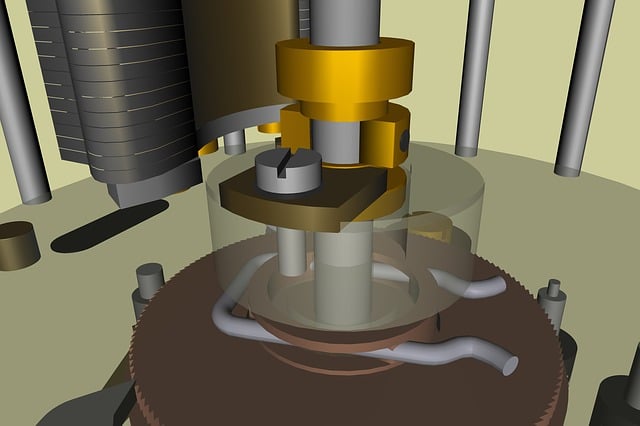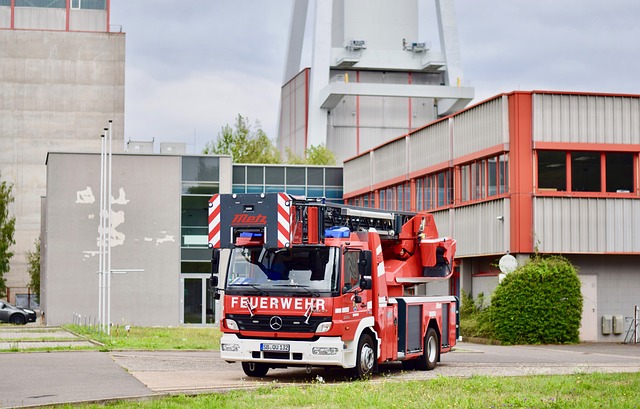Fire departments can enhance hazardous materials (hazmat) response capabilities with cost-effective solutions like budget hazmat training simulators, which offer controlled training for larger teams and customizable scenarios based on local risks. Prioritizing versatility, adaptability, and realistic simulations ensures long-term value and safety without high costs. These simulators reduce financial and hazard burdens, enabling departments to manage resources effectively while preparing firefighters for critical situations.
Fire departments face stringent budget constraints, yet maintaining effective training is paramount. This article explores how a budget hazmat training simulator addresses this challenge. We delve into understanding fire department budgets and their specific training needs, highlighting the numerous benefits of such simulators. By examining key features and implementation strategies, we demonstrate how these cost-effective solutions drive long-term savings while enhancing safety and readiness.
- Understanding Fire Department Budgets and Training Needs
- Benefits of a Budget Hazmat Training Simulator
- Key Features to Consider in a Cost-Effective Solution
- Implementation and Long-Term Savings Strategies
Understanding Fire Department Budgets and Training Needs

Fire departments across the nation face unique challenges and requirements, demanding versatile and cost-effective solutions for their training needs. Budgeting for hazardous materials (hazmat) training simulators is a strategic decision that requires a deep understanding of departmental priorities and long-term goals. These budgets often reflect a delicate balance between acquiring new equipment, maintaining existing resources, and ensuring adequate staffing levels.
Training with hazmat simulators is essential for preparing firefighters to handle dangerous situations effectively and safely. Fire departments must consider factors such as the frequency of hazardous material responses, the level of community exposure, and the specific risks posed by local industries when allocating funds for specialized training equipment like budget-friendly hazmat training simulators.
Benefits of a Budget Hazmat Training Simulator

A budget hazmat training simulator offers a cost-effective solution for fire departments aiming to enhance their hazardous materials (Hazmat) response capabilities. Traditional Hazmat training often involves expensive specialized equipment and scenarios, making it inaccessible to smaller budgets. However, with a simulator, departments can replicate various Hazmat situations without the hefty price tag. This technology enables firefighters to gain practical experience in a controlled environment, improving their decision-making skills and emergency preparedness.
By utilizing a budget-friendly Hazmat training simulator, fire departments can train a larger number of personnel, ensuring that more team members are equipped to handle Hazmat incidents. These simulators provide customizable scenarios, allowing instructors to create realistic exercises tailored to specific local risks and challenges. This adaptability is invaluable as it enables departments to prepare for unusual or rare but critical situations, ultimately improving their overall response efficiency and safety.
Key Features to Consider in a Cost-Effective Solution

When selecting fire department equipment for budget-friendly hazmat training, several key features should be at the forefront of your consideration. A cost-effective solution should prioritize versatility and adaptability to cater to various hazardous material scenarios. Look for a simulator that can simulate different types of chemicals and environments, enabling firefighters to prepare for unexpected situations. Realistic simulations, including visual and olfactory cues, are crucial for immersive training without breaking the bank.
Additionally, consider equipment with modular designs, allowing for easy updates or expansions as your department’s needs evolve. Durability is another essential aspect; sturdy construction ensures longevity and minimizes long-term replacement costs. Look for models that offer efficient decontamination areas, safe containment mechanisms, and quick setup options for streamlined training sessions without compromising on quality or safety.
Implementation and Long-Term Savings Strategies

Implementing a budget-friendly budget hazmat training simulator can be a game-changer for fire departments looking to optimize their training resources. These simulators offer a cost-effective alternative to traditional live-fire exercises, reducing the financial burden of purchasing specialized equipment and hazardous materials for regular training sessions. By replicating various hazardous scenarios, these trainers enable firefighters to gain practical experience without the associated risks and expenses.
In terms of long-term savings, the initial investment in a budget hazmat training simulator can be quickly recouped through reduced training costs and minimized exposure to potential hazards. Fire departments can conduct multiple training sessions without the need for frequent material acquisitions or disposal, leading to significant budget allocations for other critical operational needs. This strategic shift allows for better resource management, ensuring that firefighters are adequately prepared while staying within financial constraints.






